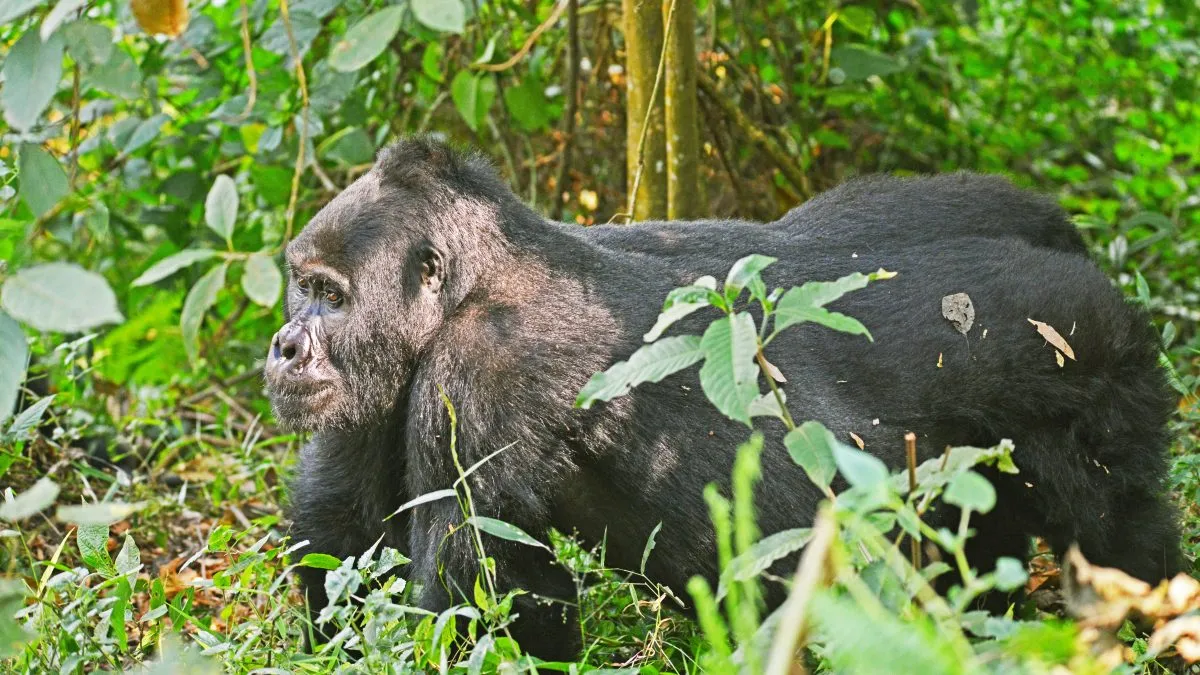Habinyanja Gorilla Group – Bwindi’s Wide-Ranging Family
The Habinyanja Gorilla Group is one of the most iconic and active gorilla families in Buhoma Sector, located in the northern part of Bwindi Impenetrable National Park. Known for their wide-ranging movement and complex social structure, this group offers one of the most fascinating gorilla trekking experiences in Uganda.
If you’re seeking a trek that blends adventure, storytelling, and natural spectacle, Habinyanja is the perfect group to meet.

A Bit of History
The name “Habinyanja” comes from a local word “Nyanja,” meaning water body—a nod to the swampy area where the group was first spotted.
This family was among the earliest to be habituated for tourism. Habituation began in 1997, and by 1999, the group was officially open for trekking. Over time, the group has experienced dramatic leadership changes and group splits, which are part of what makes their story so rich.
The group was initially led by Mugurisi, an aging silverback whose name means “old man.” After his passing, two of his sons—Rwansigazi and Mwirima—fought for dominance. Their rivalry led to a peaceful split. Mwirima left to form what is now known as the Rushegura Group, while Rwansigazi continued to lead Habinyanja.
Where Can You Track the Habinyanja Group?
The Habinyanja group is found in the Buhoma Sector, but they tend to roam over a large area. Their movements often stretch beyond the immediate forest trails, making treks to this group more physically demanding and adventurous.
Due to their active and mobile lifestyle, your trek might be longer and take you deeper into the forest. This unpredictability makes the Habinyanja experience even more thrilling. Every encounter is different.
Group Composition and Behavior
Habinyanja is a large and socially complex group. It includes:
- Several adult females
- A few blackbacks
- Multiple juveniles and infants
- A dominant silverback who keeps the group together
The group size often fluctuates due to natural gorilla dynamics such as births, migrations, and new leadership. Despite changes over the years, the family remains one of the most stable and recognized in the region.
One notable feature of Habinyanja is the interactions between members. You’ll observe grooming behavior, playful juveniles tumbling around, and the protective stance of the silverback. These subtle moments give you a true look into mountain gorilla life.
Trek Difficulty and Experience
Trekking to the Habinyanja group is considered moderate to challenging, depending on the gorillas’ location on the day of your visit. If the group is deep in the forest, expect a hike that could last 3 to 6 hours.
The terrain includes steep slopes, dense vegetation, and occasional muddy trails, especially during the rainy season. A reasonable level of fitness is required. Porters are available and highly recommended for support and carrying your gear.
When you finally reach the family, you’ll spend one unforgettable hour in their presence. The proximity, the silence, and the eyes of a 200-kg silverback watching over his family—it’s a once-in-a-lifetime encounter.
Ideal Visitors for Habinyanja Treks
The Habinyanja group is ideal for:
- Adventure seekers
- Physically fit trekkers
- Wildlife photographers looking for dynamic scenes
- Visitors who have already trekked easier groups and want a new challenge
This group offers a deeper immersion into the forest and an unmatched sense of discovery.
What to Carry for the Trek
- Strong hiking boots with good grip
- Rain jacket and waterproof backpack
- Gloves for holding branches during the trek
- Insect repellent and sunscreen
- At least 2 liters of drinking water
- Long-sleeved shirt and trekking pants for bush protection
A walking stick is provided, but bringing your own or hiring a porter adds more comfort.
Supporting Conservation Through Tourism
By trekking with the Habinyanja Group, you contribute directly to gorilla conservation. Your permit fees support park rangers, anti-poaching patrols, veterinary care, and local community development.
The community around Buhoma also benefits through employment, lodge stays, and cultural experiences, making your safari an investment in the future of both people and wildlife.
Plan Your Safari to Meet the Habinyanja Family
Gorilla permits in Buhoma cost $800 per person for foreign non-residents (2025 rate). Only a few permits are allocated daily to this group, so early booking is essential.
Pair your Habinyanja trek with visits to Queen Elizabeth National Park, Lake Bunyonyi, or cultural village walks around Buhoma for a full Ugandan adventure.

